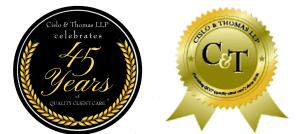As a continual stream district court judges have applied Alice in software patent disputes, litigants defending invalidity challenges have struggled to assemble a cohesive defensive strategy. The breadth of Alice‘s impact has been in no way tempered by direction from the Supreme Court. Instead, each of the Supreme Court’s recently decided Section 101 cases have thrown successively more vagueness into the analysis of patent eligibility.
In the wake of the most recent decision in Alice Corporation Pty. Ltd. v. CLS Bank Int’l, 134 S. Ct. 2347, 189 L. Ed. 2d 296 (2014), a number of courts have decided Section 101 patent eligibility on motions for judgment on the pleadings. Other courts have opted to take the safer route by waiting until claim construction is completed. However, each of these courts appear to have undertaken patent eligibility analysis with only a very thin framework provided by the Supreme Court.
In fact, former Chief Judge of the Federal Circuit, Paul Michel, stated that in view of Alice, “you can’t tell if something is patent eligible or not because the tests provided in these cases are so vague, so subjective, so personal.” Even Judge Wu of the Central District, in a very recent opinion, stated that the Alice test really boils down to Justice Potter Stewart’s most famous phrase: “But I know it when I see it …” suggesting the analysis is wholly subjective.
The uncertainty surrounding Section 101 threatens to reverberate in the life sciences, where the Myriad decision last year already shook the foundation of many patents directed to nucleic acid systems. Indeed, on September 3, 2014 Magistrate judge Christopher Burke referenced theAlice case when he suggested that claim 1 of Genetic Technologies US patent 7,615,342 constitutes non-patentable subject matter.



